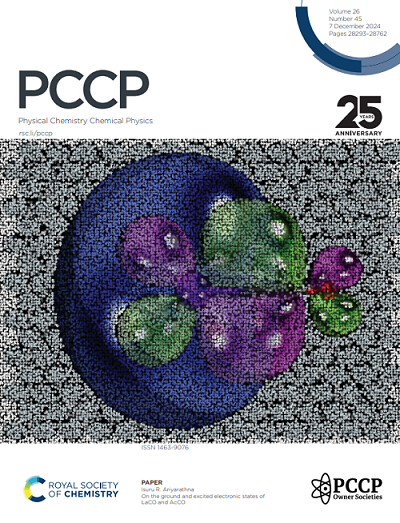The Need for Robust Model Systems for the Study of Hybrid Interfaces in Photocatalysis and Photoelectrocatalysis
IF 2.9
3区 化学
Q3 CHEMISTRY, PHYSICAL
引用次数: 0
Abstract
Small molecule conversion to value-added products using renewable energy sources has emerged as a promising strategy to mitigate our reliance on fossil fuels. Hybrid materials that integrate the strengths of photoabsorbers and co-catalysts (electrocatalysts) are essential for maximizing the efficiency of photochemical (PC) and photoelectrochemical (PEC) systems. In this perspective, we will focus on the need for fundamental studies with a strong emphasis on the importance of beginning with well-defined hybrid interfaces. A particular focus is given to small molecule adsorption studies that correlate surface structure and chemistry to reactivity, highlighting its potential in characterizing complex interfaces. We also make the case for understanding how light and electrochemical environments influence surface structure, adsorption, and reactivity and should be considered in model hybrid system design. Finally, we provide a framework to connect theory and experiment of model hybrid surfaces to provide a molecular understanding of PC and PEC at these interfaces and accelerate our integration of these materials into real systems that are capable of meeting our renewable energy needs求助全文
约1分钟内获得全文
求助全文
来源期刊

Physical Chemistry Chemical Physics
化学-物理:原子、分子和化学物理
CiteScore
5.50
自引率
9.10%
发文量
2675
审稿时长
2.0 months
期刊介绍:
Physical Chemistry Chemical Physics (PCCP) is an international journal co-owned by 19 physical chemistry and physics societies from around the world. This journal publishes original, cutting-edge research in physical chemistry, chemical physics and biophysical chemistry. To be suitable for publication in PCCP, articles must include significant innovation and/or insight into physical chemistry; this is the most important criterion that reviewers and Editors will judge against when evaluating submissions.
The journal has a broad scope and welcomes contributions spanning experiment, theory, computation and data science. Topical coverage includes spectroscopy, dynamics, kinetics, statistical mechanics, thermodynamics, electrochemistry, catalysis, surface science, quantum mechanics, quantum computing and machine learning. Interdisciplinary research areas such as polymers and soft matter, materials, nanoscience, energy, surfaces/interfaces, and biophysical chemistry are welcomed if they demonstrate significant innovation and/or insight into physical chemistry. Joined experimental/theoretical studies are particularly appreciated when complementary and based on up-to-date approaches.
 求助内容:
求助内容: 应助结果提醒方式:
应助结果提醒方式:


